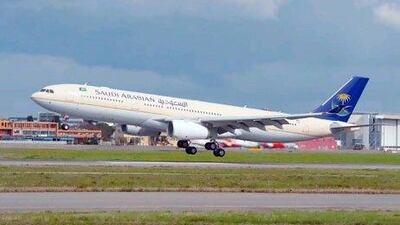The number of visitors to Cape Town this year is running more than 25 per cent up on a year ago.
Airlines report record demand for seats as the peak summer season gets under way. New hotels are going up across the city and are booked out almost before they open. Game parks are full and every tourist facility is bursting at the seams.
Yet the South African economy is in a mess and diving deeper by the day. On Monday the rating agency Moody’s savagely criticised the finance minister Malusi Gigaba’s recent budget statement, almost certainly heralding a further down-grade of the country’s foreign and local currency – already given junk status by two of the three big rating agencies.
Just when it seemed it couldn’t get worse, it did. Mr Gigaba’s budget statement owned up to a string of disasters – a colossal 51 billion rand (Dh13.32bn) shortfall in tax revenue (and this after a tax increase in 2016), a steep climb in the budget deficit to 4.3 per cent of GDP, a fall in February’s economic growth forecast from 1.3 per cent to 0.7 per cent, and a forecast that government debt would rise to 60 per cent of GDP by 2022 (from less than 30 per cent when Jacob Zuma became president in 2009).
Most unnerving of all is the acknowledgement that Mr Gigaba hasn’t a clue what to do about it and has more or less given up even trying. Economists have focused on his abandonment of the policy of “fiscal consolidation” he promised to pursue when he took over after the sacking of Pravin Gordhan last April. The movement away from fiscal prudence, says the rating agency Fitch, is “occurring faster than we had expected”, while Zuzana Brixiova, Moody’s well-respected sovereign analyst for South Africa, said the statement signalled “a marked credit-negative departure from earlier fiscal consolidation efforts”. South Africa's debt sustainability, he warned, is at risk because revenue collection is under-performing and expenditure will be hard to reduce in the run-up to the 2019 general elections.
South Africa is already paying a penal 9 per cent for its borrowing yet the debt burden is projected to increase by almost 7 per cent a year, raising the interest burden to 15 per cent of revenue by 2020. It is already the single biggest item of governments spending, well ahead of education, health or pensions, all of which are in dire need of more funding.
______________
Read more:
Rising illegal outflows stoke anger across Africa
South Africa's test case made for cryptocurrency
Eskom’s chief is a cause for concern in South Africa
______________
Nowhere is the serious state of the country’s finances more visible than in South Africa’s mining industry, traditionally the engine room for what used to be the continent’s strongest economy. A proposed mining charter, which requires higher levels of black ownership than ever before, is seen as so penal that investment in new mines has almost come to a halt. Corruption and favouritism in the awarding of new licences has persuaded the big international mining companies that they have no future in the country, causing them to switch their focus to more friendly climes.
Even more worrying, however, is the plight of the state-owned industries, many of them big loss-makers. South African Airways (SAA) is a basket case, requiring a series of government bail-outs that have simply staved off the crisis for another few months. Successive changes of management and board, driven personally by Mr Zuma who has insisted on installing his friends and cronies into plum jobs, have basically destroyed it as a functioning entity. As with the rest of the economy, no one knows how to resolve it. Mr Gigaba last week said SAA should be retained “in our national interest” rather than “rely exclusively on the profit and scheduling considerations of global airlines”.
His statement that only a state airline can sell “SA’s economy, tourism and culture to every one of its passengers” has met with howls of outrage. “Balderdash,” thundered the veteran commentator Steve Mulholland; “utter nonsense”, said Peter Bruce, perhaps the country’s most respected financial columnist.
Like many other international travellers, I no longer fly SAA, preferring to use the Middle East operators, such as Emirates, Etihad and others who are increasing their share of the market. Any of these airlines would be happy to take on the job of selling South Africa as a tourist destination – and already do.
The national electricity provider, Eskom, is in a more parlous state even than the bankrupt SAA. Its debts now amount to 9.3 per cent of GDP and go on mounting at a terrifying rate. No one knows what to do about that either. The country may be able to manage without a national carrier but it does need to keep the lights on – and no international or private company is prepared to take that on.
The real message of the budget is that the country is rudderless, run – or not run – by a president who seems to care about nothing more than his own personal survival. The ruling ANC is sharply divided as it heads into its electoral conference in December when Mr Zuma’s successor will be decided (the front-runners are the deputy president Cyril Ramaphosa and Nkosazana Dlamini Zuma, the president’s ex-wife), but Mr Zuma still has another two years to serve as president.
Nothing much is going to change in that time.
And the markets, if they weren’t fully aware of it before Mr Gigaba’s budget statement, certainly know it now.

